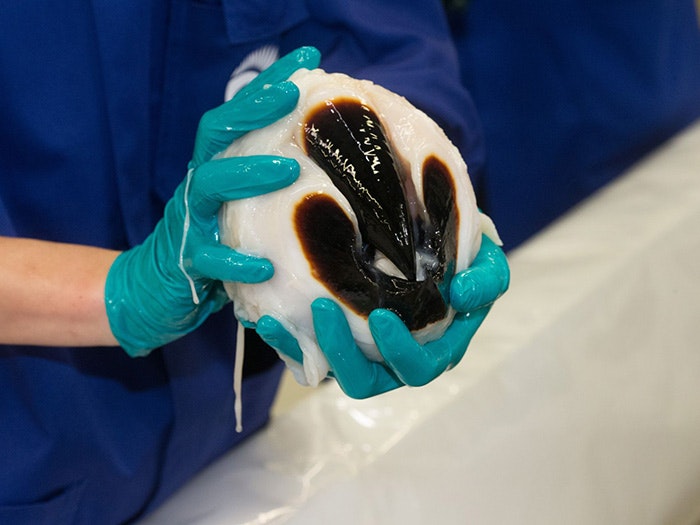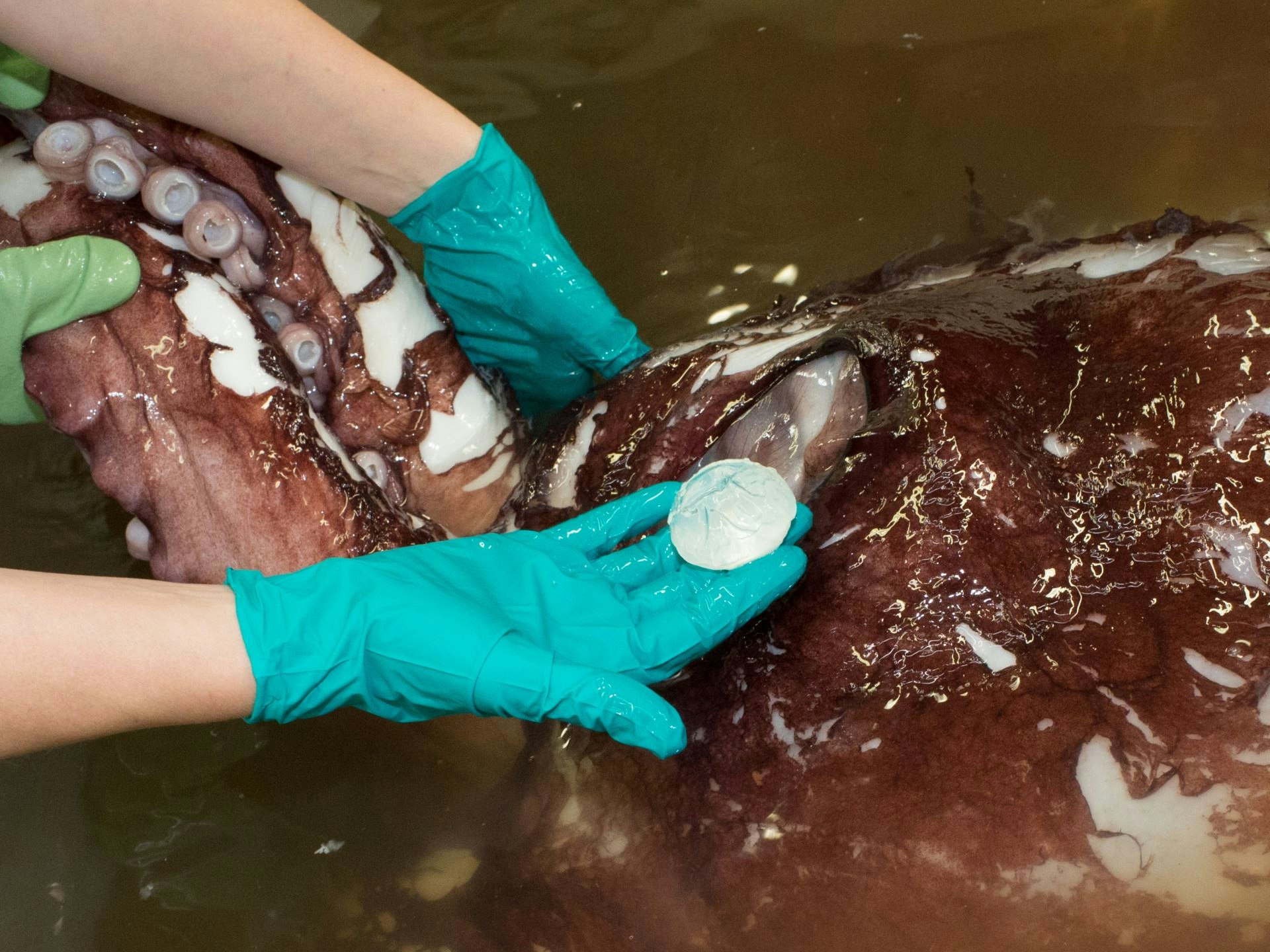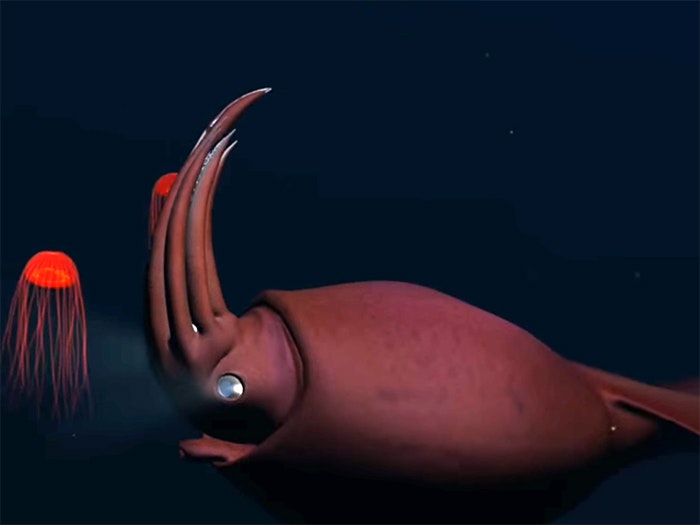
The beak of the colossal squid
Like all squid and octopus, and their relatives, the colossal squid has a beak. This is essentially the mouth of the squid, and the first stage of the digestive system.
Free museum entry for New Zealanders and people living in New Zealand
Open every day 10am-6pm
(except Christmas Day)
Free museum entry for New Zealanders and people living in New Zealand
Like all squid, the colossal squid has eight arms and two tentacles. Each of the arms is a different length, ranging from 0.85 metres to 1.15 metres. The two tentacles are longer than the arms and are about 2.1 metres long.
The colossal squid is unique because it has incredible rotating hooks on the club-shaped ends of the tentacles. These are used for grabbing and holding prey! The arms differ from the tentacles in having many more and much bigger suckers, and hooks that do not rotate.
A scientists holds the tentacles of the colossal squid, 2014. Photograph by Norm Heke. Te Papa
The tentacle hooks and the arm hooks are very different. The hooks on the tentacles can swivel, but the arm hooks cannot.
Each tentacle hook sits on a short stalk, flush with the inner surface of the tentacle club, in a flattened depression — this allows the flattened 'back' surface of the hook to rotate. The hooks can rotate right round, through 360 degrees.
We don't know whether the squid can actively control each hook individually, or whether the hooks swivel passively once latched onto the prey to keep a grip on it.
There are two rows of rotating hooks on the middle part (manus) of the tentacle club, and 22 to 25 tentacle hooks in total. These swivelling hooks are smaller than the hooks on the arms and have only a single main 'claw'. Each row of rotating hooks is flanked by a row of tiny, marginal suckers.
Hooks on the colossal squid’s two tentacles, 2014. Photograph by Jean-Claude Stahl. Te Papa
The arm hooks are set in a double row in the middle of each arm, with the serrated suckers above and below them. The arm hooks are set in fleshy, very muscular sheaths and are strongly attached to the arms. They probably help to hold and immobilise struggling prey as it is being killed and eaten.
Most of the arm hooks have a strong main 'claw', with two smaller cusps closer to the hook's base. This makes them three-pointed and maximises their ability to hold and dig in. The base of each hook also has a complex structure that is set deep into the surrounding muscle.
There are suckers on both the arms and tentacles of the colossal squid. All squid have suckers and their number, type, and arrangement is unique for each species.
Squid suckers have a calcareous inner structure. In colossal squid these are sharply serrated and probably lethal to prey. Toothfish caught on longlines sometimes have circular marks where they have been damaged by colossal squid suckers.
Tentacle club swivelling hook and arm sucker dissected out from the fleshy suckers, 2008. Te Papa
Other squid families have hooks on the arms or tentacles, or both. The colossal squid is the only hooked squid in its family (the Cranchiidae), which includes about 20 species.

Like all squid and octopus, and their relatives, the colossal squid has a beak. This is essentially the mouth of the squid, and the first stage of the digestive system.

The colossal squid has the largest animal eyes ever studied. It possibly has the largest eyes that have ever existed during the history of the animal kingdom.

We know very little about the colossal squid’s life history, diet, or behaviour, because they live at extreme depths in freezing water, but here's what we do know...